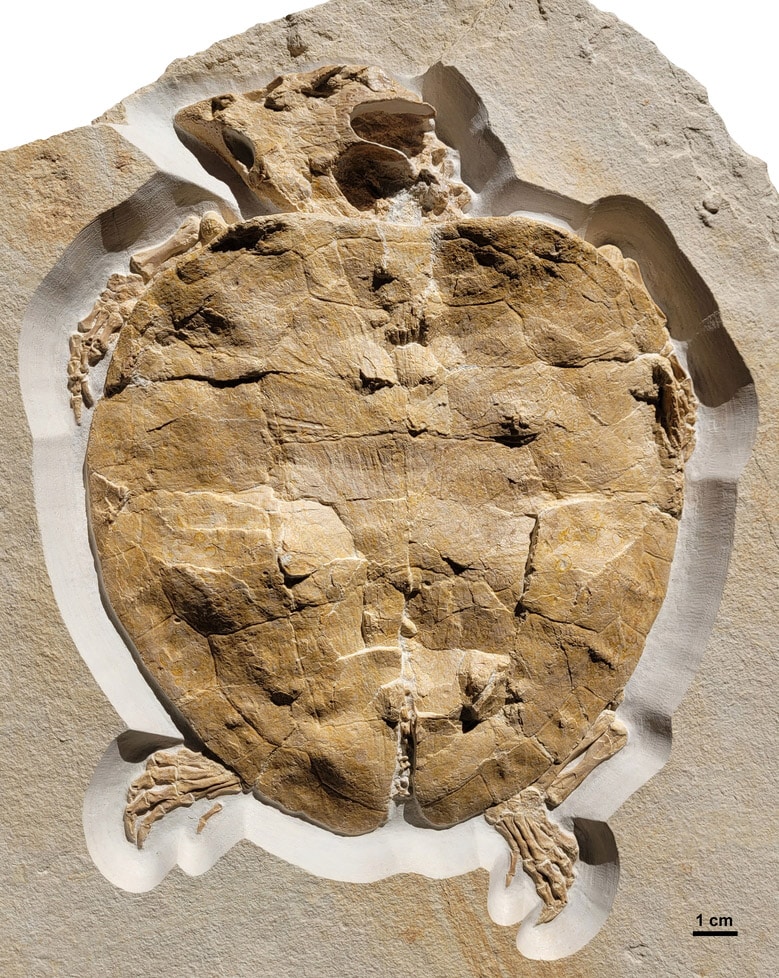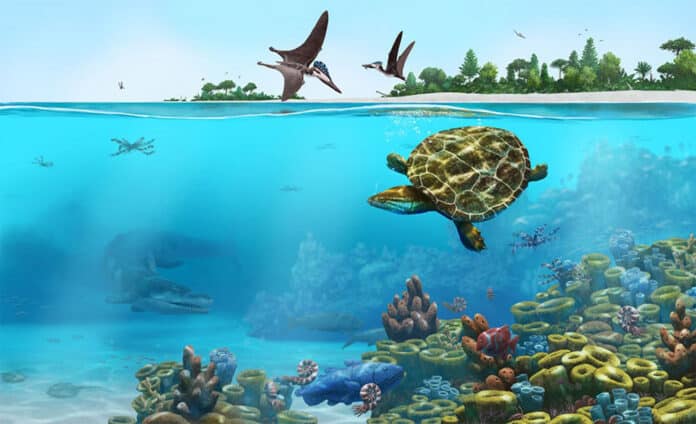The limestones of the Solnhofen area in southern Germany are one of the most essential fossil Lagerstätten from the entire Mesozoic era, especially famous for the exquisitely preserved vertebrates. The turtles from the Solnhofen Limestone have always been of special interest because they include some of the best-preserved specimens from the Mesozoic.
A new study describes a new turtle fossil from the Upper Jurassic– when southern Germany was a tropical archipelago. The Upper Jurassic laminated limestone (German Plattenkalk) of the Franconian Alb in southern Germany represents one of the most important fossil Lagerstätten of the entire Mesozoic era.
Scientists from the University of Tübingen describe a new turtle specimen from the Torleite Formation (Kimmeridgian) of Painten and refer it to the thalassochelydian turtle Solnhofia persons based on the presence of a unique combination of characters.
The specimen was found at the bottom of the exposed section in the ‘Kieselplattenkalk,’ a 5.9 m thick package of laminated, fine-grained, silicified limestone intercalated with graded turbidite horizons consisting of carbonate debris.

The turtle fossil yields essential clues about the species and the habitat in southern Germany 150 million years ago. Its forelimbs and hind limbs are comparatively short, suggesting that the turtle lived near the coast. This contrasts with today’s sea turtles, which have elongated flippers and live in the open sea.
The head and carapace of Solnhofia persons are also clearly preserved. The beak is long and pointed; the head is triangular and measures almost half the length of the carapace at just over nine centimeters long. It may have used its large head to crush hard food items such as shelled invertebrates, as we see in some modern turtles, but it does not mean these were exclusively forming its diet.
This new specimen is only the second described specimen preserving both the skull and the postcranium in articulation.
Andreas Matzke of the University of Tübingen and a study co-author said, “The very good preservation of the fossils in the layers of limestone can be explained by the environmental conditions at the time. 150 million years ago, a shallow, tropical sea stretched across southern Germany; it contained many islands and reefs that separated basins from the open sea.”
“Floating particles sank to the basin floors, forming layers of limestone. If an animal died, its remains also sank to the bottom. Due to the low exchange of the lagoon water with the open sea, the oxygen content there was so low and the salt content so high that dead plants and animals did not decompose. Plant and animal remains were preserved and fossilized in the limestone – often in unique detail.”
Journal Reference:
- Augustin FJ, Rabi M, Spindler F, Kampouridis P, Hartung J, Albersdörfer R, et al. (2023) A new specimen of Solnhofia parsonsi from the Upper Jurassic (Kimmeridgian) Plattenkalk deposits of Painten (Bavaria, Germany) and comments on the relationship between limb taphonomy and habitat ecology in fossil turtles. PLoS ONE 18(7): e0287936. DOI: 10.1371/journal.pone.0287936
